Interview: "It’s arguably the first guitar effects pedal ever" – Gibson on the return of the FZ-1 Fuzz-Tone and Maestro pedals
Gibson Director of Engineering, Craig Hockenberry on the past, comeback and future
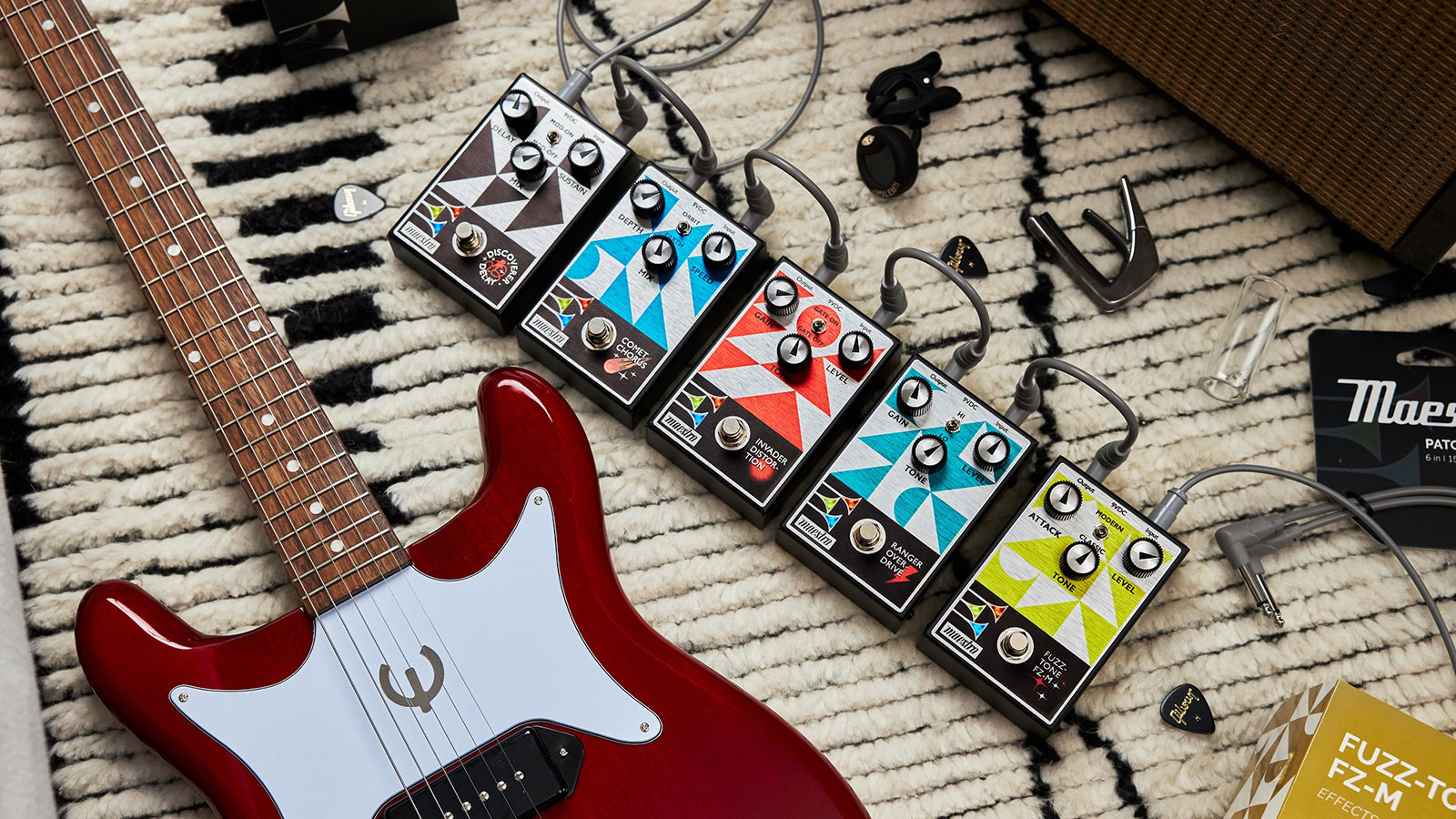
60 years ago, Maestro’s first stompbox – the FZ-1 Fuzz-Tone – was launched. Kickstarting a revolution in sound it was the progenitor of all fuzz pedals
Employing three germanium transistors this simple circuit was slow to take off at first. But by the mid-’60s, the burgeoning electric guitar world couldn’t get enough of the new fuzz sound.
During the effects pedal market’s formative years of the ‘60s and ‘70s, Maestro was synonymous with innovation.
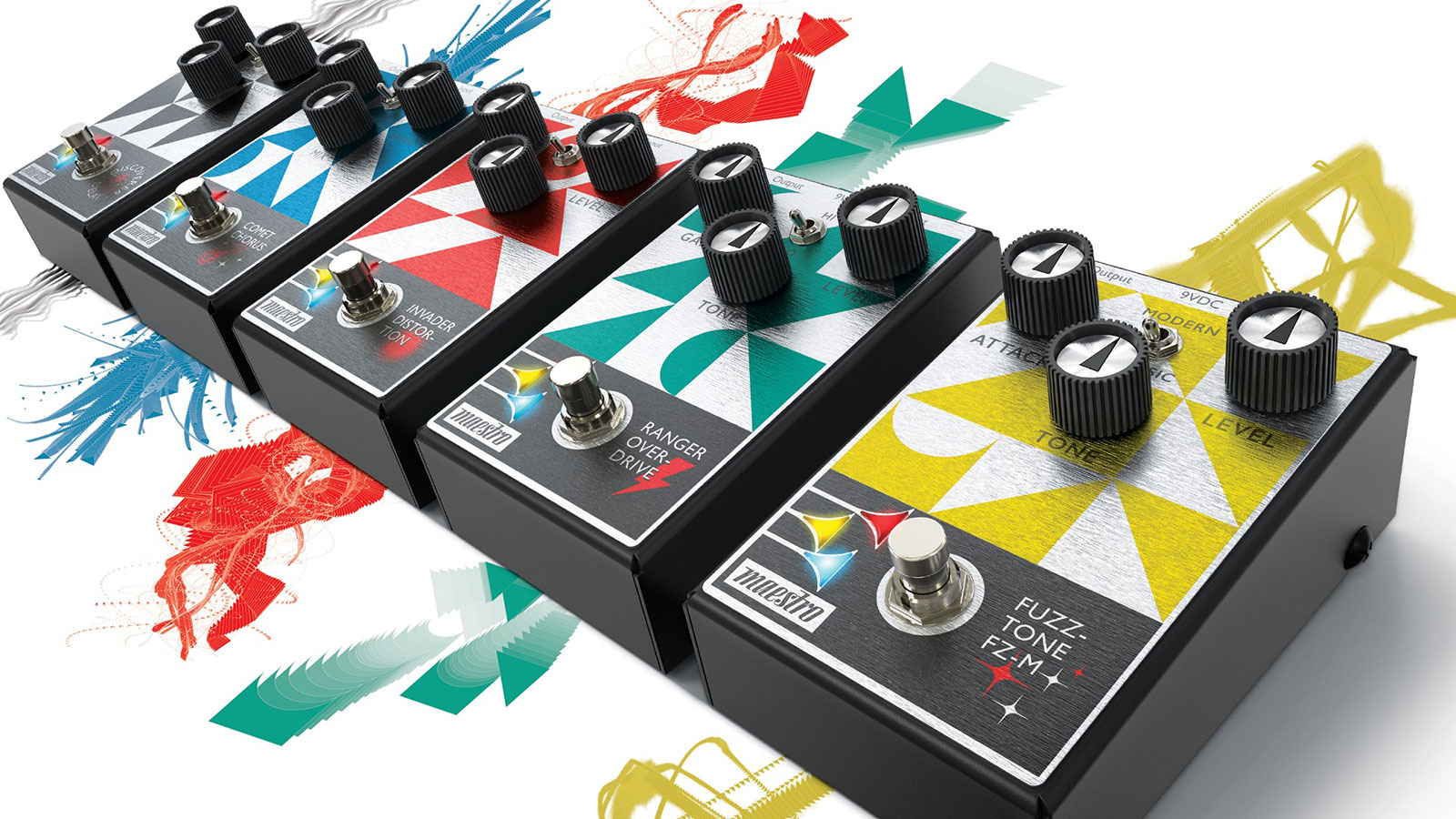
Aside from the FZ-1 Fuzz-Tone, other Maestro firsts include the Tom Oberheim-designed PS-1 Phase Shifter and RM-1 Ring Modulator pedals – both also believed to be the first commercially available stompboxes of their type.
Today, these vintage effects along with other classics such as the Maestro Echoplex tape delays and Rover rotary speaker are held in high regard. Indeed, the demand for Maestro products has probably never been higher.
This year, after a long hiatus, Gibson have finally brought Maestro back to life by launching a series of stompboxes that hark back to the brand’s rich heritage.
We spoke to Gibson’s Director of Engineering, Craig Hockenberry, to find out more.
Get the MusicRadar Newsletter
Want all the hottest music and gear news, reviews, deals, features and more, direct to your inbox? Sign up here.
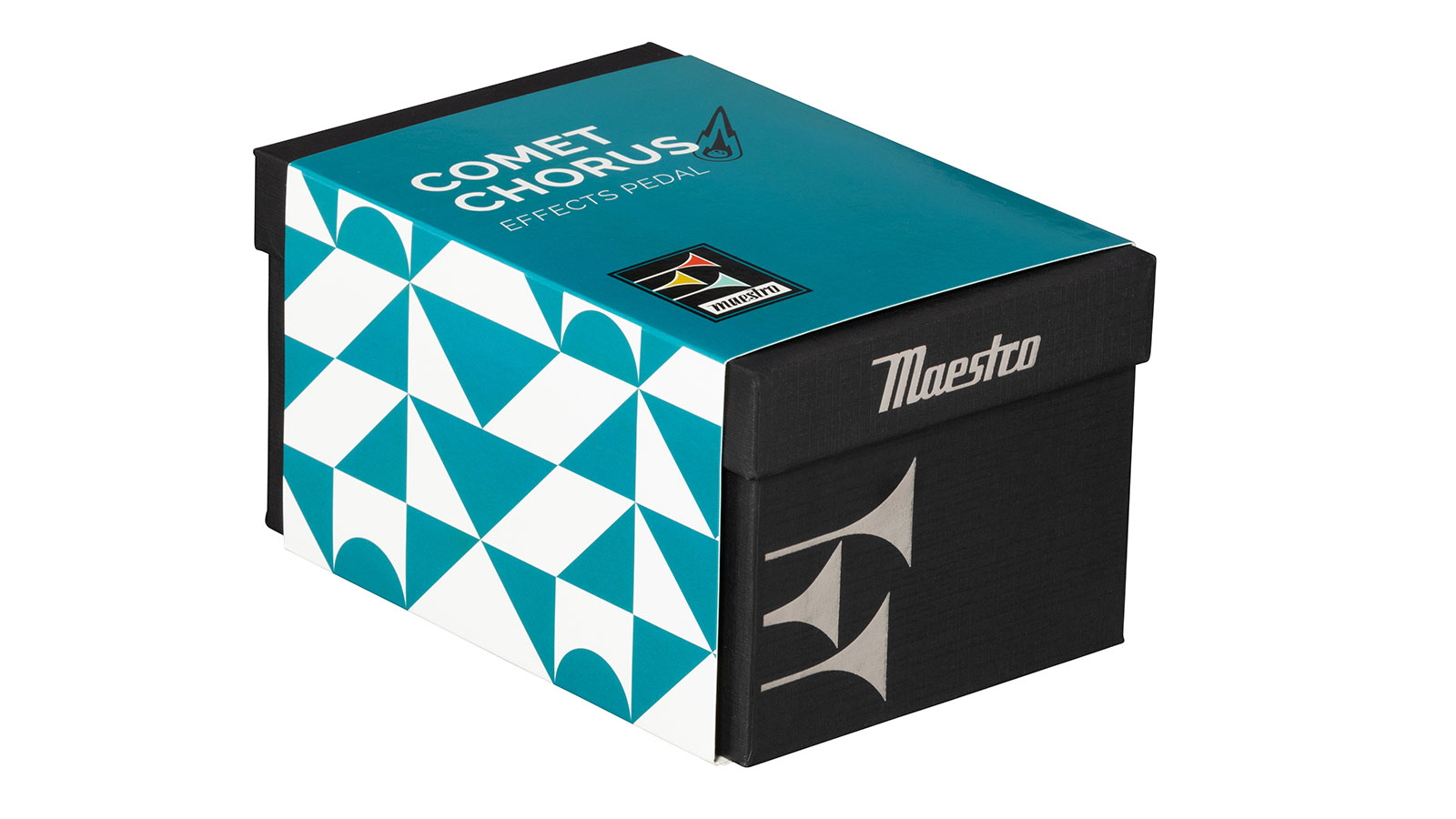
For years, people have been asking, ‘why don’t Gibson reintroduce Maestro pedals?’ We’re pleased to see they’ve finally arrived.
"It was definitely time. [laughs] Obviously, we recognise the pedal market is saturated and everybody’s playing in it. But Maestro pretty much founded the effects pedal market back in the early ‘60s."
Of course, Maestro can lay claim to the first fuzz pedal, the FZ-1 Fuzz-Tone.
"It’s arguably the first guitar effects pedal ever. At least the first commercially marketed one was the Fuzz-Tone back in ’62. That was the grandaddy."
How did the FZ-1 Fuzz-Tone come about?
There’s a little backstory. Marty Robbins was tracking Don’t Worry back in the early ‘60s in a studio here in Nashville and one of the mixing board channel strips went out. But they loved the tone of the distorted bass guitar so much that the engineer, Glenn Snoddy, recreated the sound via the FZ-1. He made it a product. It’s so cool how that came about.
"Back in those days, all transistors were germanium. The FZ-1 is a super-simple circuit. It’s only got a couple of gain stages."
What made the FZ-1 Fuzz-Tone a success?
"Because Keith Richards got hold of one and used it to record with. In ’65, he made a demo track for (I Can't Get No) Satisfaction but that iconic lead guitar line was supposed to simulate horns. They liked it so much they decided to keep it.
"After that, demand for FZ-1s went through the roof."
The FZ-1 inspired countless other fuzz pedal designs in the mid-‘60s…
Oh yeah. There were so many. Obviously, the Tone Bender and Fuzz Face, but there were so many others that followed suit. It exploded in the mid-‘60s… And then Hendrix came along.
Tell us about the Gibson EB-OF bass, which also appeared in ‘62.
That has the exact same circuit as the FZ-1 built into the guitar. It’s an SG-style bass, similar to the EB-0, but Gibson only made it for a few years. It has 'Fuzztone' written on the scratchplate.
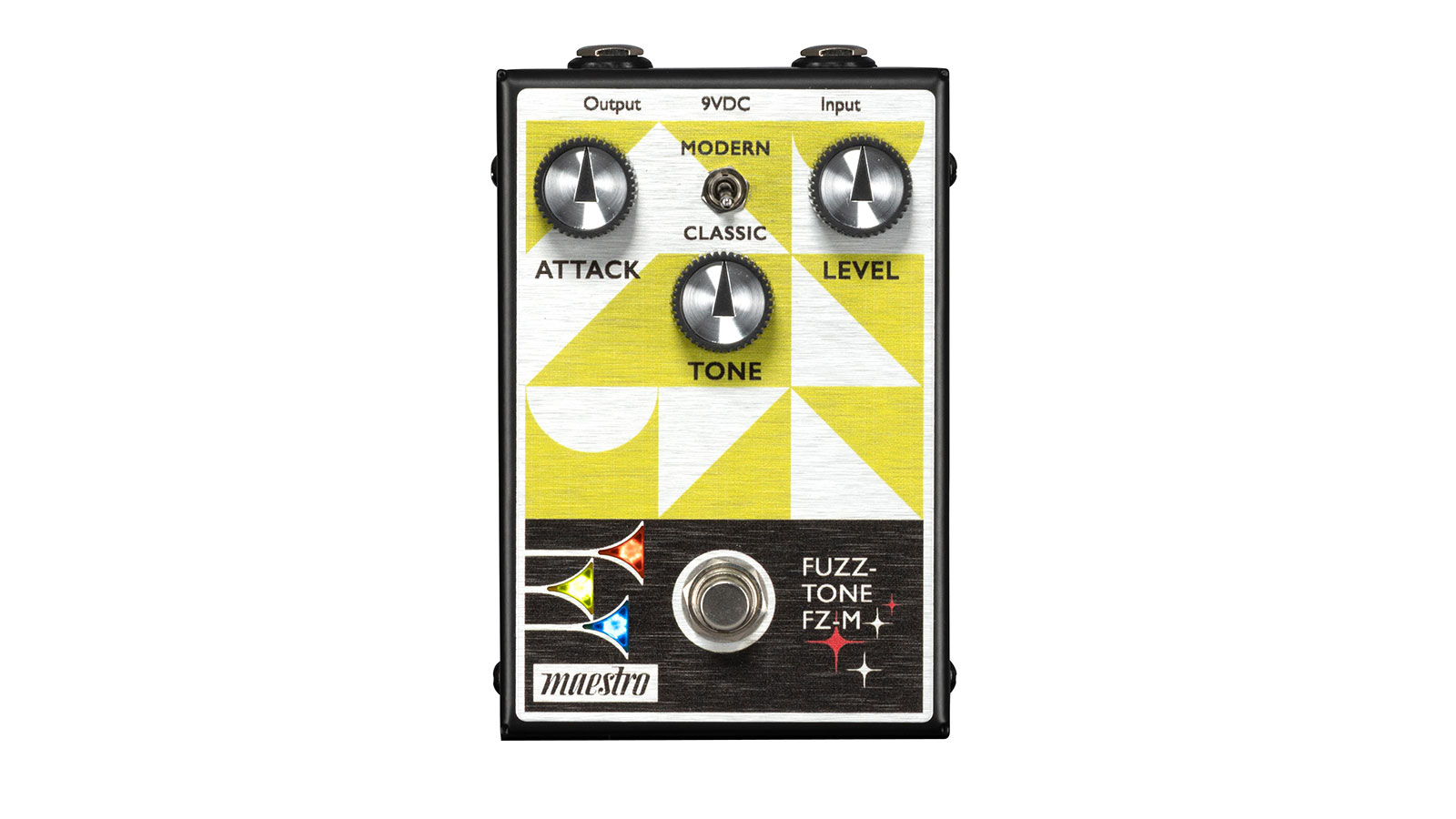
"It’s a mass-marketed product, and we didn’t want to get into a position where we weren’t able to get hold of components
The new Maestro Fuzz-Tone FZ-M has a slightly different name. What does the ‘M’ stand for?
"The ‘M’ stands for ‘modern’ because it’s a modern take on the FZ-1. It’s all analogue and features true bypass. But instead of using germanium transistors we’re using silicon transistors. They tend to be a lot more reliable and more readily available.
"It’s a mass-marketed product, and we didn’t want to get into a position where we weren’t able to get hold of components. Also, matching germanium transistors [for gain, noise, leakage etc.] is such a critical part of getting a good sound and we didn’t want to scrap anything."
What are the differences between the FZ-M’s two modes, Modern and Classic?
"We were able to capture the tone of the original FZ-1 in Classic setting. You can really dial in the sound of the FZ-1 if you want to. We’ve had a lot of feedback and people seem to love that classic tone. It’s a bite-y sound that rips and cuts through anything. It’s got a mid-high tilt and it just sounds raunchy. It’s great!
The Modern setting provides a more modern-sounding fuzz tone. There’s more of a midrange push and quite a bit more low end. You can also dial in some cool mellow sounds on the Modern setting if you pull the Attack back.
The different settings use different tone circuits. There’s more of a mid-sweep in the Modern setting, so you can get that midrange hump if you want to.
It sounds like two fuzz pedals in one unit…
"That’s where we’re at with these pedals – we wanted to give the user two pedals in one for under 150 bucks."
How does the sound of the FZ-M vary between single coils and humbuckers?
"It depends on what you’re trying to get out of it, but I’d say the FZ-M fuzz works equally well with both. Humbuckers give it a little more drive and growl. But the single coils sound amazing too; in Classic mode they accentuate that bite even more."
Such a range of sound can be very useful for recording…
"Heck, yeah! We think the Maestro pedals will do really well in the studio. The design team worked hard on the sound quality and getting the noise floor down. We have a lot of experience in pro audio design and noiseless circuits."
For all these pedals we tried to find old names that Gibson or Maestro used in the past
Tell us about the Ranger Overdrive…
"Again, it’s like two pedals in one; there are two styles of overdrive. It has op amp circuits with diode clipping, but the Hi and Lo modes are two distinctly different circuits. We use different diodes on each setting for a different flavour of overdrive.
"With the Lo setting, we blend in some of the clean signal, and that gives the sound extra range and fullness. The Hi mode gives you extremely expressive amp-like drive. It’s a little harder, and it doesn’t have any clean [signal] blended in.
"The controls on the Ranger are very reactive. Even though it only has three knobs, you can dial in pretty much any overdrive tone you need. That’s because there’s so much play in the knobs.
"The Ranger Overdrive’s Hi and Lo settings share the same tone circuitry, but because of the different styles of overdrive we have in there, it reacts quite differently. It’s a very reactive pedal. If you switch between the two settings – from one style of diode to the other – the harmonics are quite different. And the tone circuit reacts differently with those harmonics."
Is it symmetrical or asymmetrical clipping? Or Both?
"It’s symmetrical."
Where does the Ranger name come from?
"That comes from the name of an old Gibson amp. For all these pedals we tried to find old names that Gibson or Maestro used in the past. Obviously, there’s the Fuzz-Tone, but the Ranger, Invader, Discoverer and Comet are all names of vintage amps.
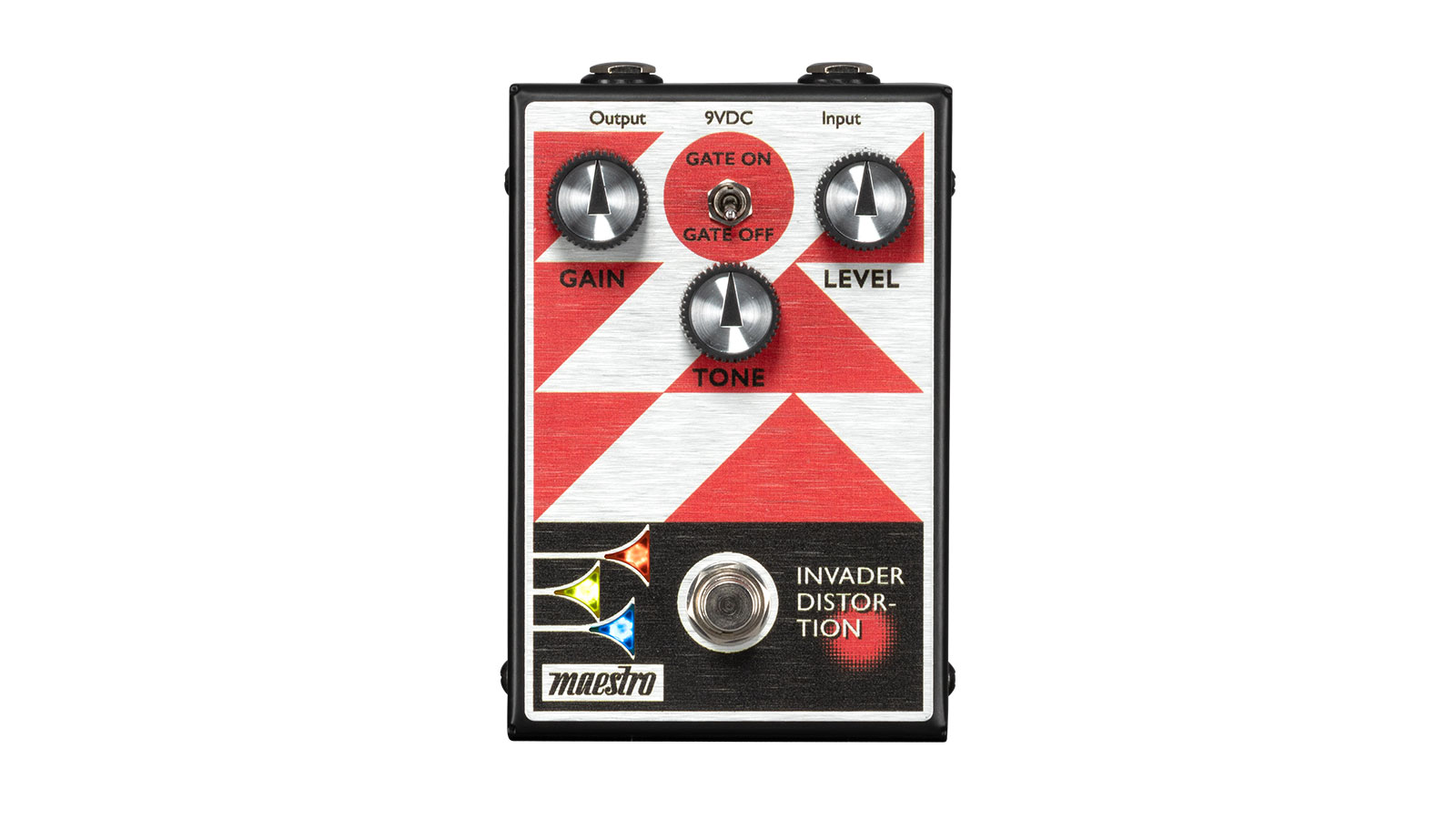
The Gate On/Gate Off modes on the Invader Distortion are interesting…
"Originally, we were going to do the ‘two pedals in one’ thing with the Invader Distortion. Our original idea was to have Attack and Destroy settings – one being really high gain, and the other being extremely over-the-top. But when we designed the extremely over-the-top sound it became difficult to control the feedback (I mean it was a ridiculously high gain!) so, we started building in a noise gate.
"The lower high gain setting sounded so good and is so harmonically rich, we thought ‘why don’t we just make that switch a noise gate instead?’ In the end, we increased the gain a little bit more on the top end of the Gain knob and threw in a noise gate just in case anybody needed to control feedback.
"You can dial in the [noise gate] threshold using a trim pot inside the pedal. So, the Invader Distortion really shines for chugging and muting. I mean you can dial it in so it’s dead silent, which is a cool feature.
The Discoverer Delay looks great. It’s nice to see a Modulation on/off mode has been included. Are there trim pots inside the pedal to adjust modulation settings?
"There are two trim pots to adjust the rate and the level of modulation in the Discoverer Delay. The modulation is so cool. It ranges from a nice little tape like wow and flutter in the lower settings to an extremely pitch-shifted effect. This pedal has extreme adjustability."
What’s the difference between the Orbit and Earth modes on the Comet Chorus?
"We really wanted to dial in a classic Maestro vibe with the Comet Chorus. Like the Discoverer Delay it’s a bucket brigade circuit, which gives you that classic analog chorus sound when it’s in Earth mode. It gives you some pitch modulation which works really well, especially on slower speeds.
"The Orbit mode adds in amplitude modulation which gives more of a rotary speaker type of effect. When you close your eyes, it’s like you’re standing in front of a Leslie speaker. Back in the day, Maestro did a rotary speaker called the Rover and that’s the kind of sound we were after.
"The Mix knob also helps give the Comet Chorus a unique flavour. It mixes in the amount of chorus signal, but the other cool thing is when you crank it, it gives you a very slight boost. We have a million guitar players here at Gibson and somebody recommended that feature to allow the guitar sound to cut through more. We put a little kick on the end; it’s only a decibel or two but it makes all the difference."
The sky is the limit on what Maestro are going to make
Are there more Maestro pedals on the way?
"We have five more coming out soon that follow that same space age theme. The sky is the limit on what Maestro are going to make. We have a roadmap for the next five years and we’re definitely going to be doing some cool reissues. We’re going to be making essential pedals like these, and we’re going to jump back into the innovative side of Maestro.
"Back in the ‘60s, Maestro was all about innovation and we want to bring that into today’s world. We’re going to push the limits on all of this and the whole team is super excited about it."
For more information on Maestro pedals, head to Gibson.
Rod Brakes is a music journalist with an expertise in guitars. Having spent many years at the coalface as a guitar dealer and tech, Rod's more recent work as a writer covering artists, industry pros and gear includes contributions for leading publications and websites such as Guitarist, Total Guitar, Guitar World, Guitar Player and MusicRadar in addition to specialist music books, blogs and social media. He is also a lifelong musician.
“A pedal that sings with harmonic richness and blooming touch response”: Tone King offers up boutique tube amp tones for your pedalboard with the Imperial Preamp
“Each and every unit is perfectly dialled in to the 'sweet spot' that can be so elusive to find in vintage pedals”: Pigtronix’s Gas Giant is a high-gain fuzz pedal with a FET-driven onboard noise gate










